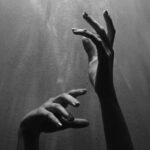For many unfamiliar viewers, Olympic dressage might appear simply as “horse dancing,” an equestrian event where athletes in formal attire guide their horses through seemingly choreographed steps. However, beneath the surface of elegance and harmony lies a world of rigorous training, unwavering dedication, and profound partnership between horse and rider. Charlotte Dujardin’s record-breaking bronze medal at the Tokyo 2020 Olympics brought this captivating sport into the spotlight, but what truly goes into training a horse for Olympic-level dressage, often playfully referred to as “Horse Dancing Olympics”?
To understand the depth of dressage, one must move beyond the simplistic notion of “making a horse dance.” As international dressage rider Lewis Carrier explains, “it’s not something you can just do.” Carrier, who has dedicated his life to equestrian sports since the age of six and aspires to represent Team GB at the Paris 2024 Games, emphasizes the years of meticulous training required. “Training a horse to do that takes years of experience,” he states. “It’s like learning to dance. It’s technique. It’s teaching a horse how to move a certain way and how to use their body in a certain way.” This intricate process is why dressage often sees athletes with more mature careers compared to other Olympic disciplines. Consider Carl Hester, Great Britain’s oldest Olympian at the Tokyo Games and a decorated medalist. His extensive experience, dating back to his first Olympics in 1992, underscores the longevity and commitment demanded by Olympic dressage.
Image: International dressage rider Lewis Carrier, highlighting the expertise required in Olympic dressage, often called “horse dancing olympics.”
Lewis Carrier further describes the subtle yet powerful connection between horse and rider in dressage, almost comparing it to a Jedi-like force. He explains, “It’s so much about feel. It’s so hard as a trainer to teach someone, it’s just something you feel one day and you have it. You have the feel.” Every nuanced movement in dressage is initiated by nearly imperceptible cues, or “aides,” from the rider. Years of training foster an extraordinary understanding between horse and rider. “These horses have trained with these riders for such a long time. They know exactly what the rider is asking for when they do it. They have to be moving like Olympians. Nothing can look forced, it has to look harmonious between horse and rider.” This harmony is what elevates dressage beyond mere steps; it becomes a fluid, almost telepathic dialogue expressed through movement, a key aspect of “horse dancing olympics.”
Image: Team GB dressage team, featuring Carl Hester, whose long experience contributes to success in “horse dancing olympics.”
To truly appreciate the complexities of Olympic dressage, understanding the competition structure is essential. At the Olympic Games, dressage unfolds across three distinct tests: the Grand Prix (qualifying round), the Grand Prix Special (team final), and the Grand Prix Freestyle (individual final). Nations can field teams of three horse-and-rider combinations. In each test, the combination performs a predetermined sequence of movements, evaluated by a panel of seven judges. The qualifying round determines team progression and individual qualification for later stages. The top eight teams advance to the team final, where scores are aggregated to award team medals. Subsequently, the top 18 riders from the team final proceed to the individual final, showcasing their artistry and precision in the Grand Prix Freestyle, often set to music, further enhancing the “horse dancing olympics” perception for spectators.
Elite dressage athletes like Charlotte Dujardin typically train with a string of horses, ensuring readiness and succession within their equine partners. Horses typically begin their competitive dressage careers around eight years old and can continue into their late teens, sometimes even reaching 20. While the horses themselves don’t receive Olympic medals in the human sense, their achievements are celebrated and rewarded. Lewis Carrier mentions the horses are often rewarded with treats like sugar cubes and carrots, a tangible acknowledgment of their exceptional performance in this demanding sport. “It’s hard to explain to an animal how good they have done,” Lewis reflects, “[But] these horses know the riders so well and they know when they’ve done a good job.”
Image: International dressage rider Lewis Carrier explaining the technique involved in training horses for “horse dancing olympics.”
Interestingly, while Olympic rules stipulate that horses must be partly owned by a national of the representing country, dressage horse bloodlines are predominantly traced back to Dutch and German breeding programs. This reflects the historical dominance and established infrastructure for dressage breeding and training in these European nations, where “horse dancing olympics” traditions are deeply rooted.
The Tokyo 2020 Olympics also highlighted the emergence of young talent in dressage. Lottie Fry, at just 25 years old, became the youngest medalist in the team final, securing a bronze alongside seasoned veterans Carl Hester and Charlotte Dujardin. Lewis Carrier recognized the significance of her accomplishment: “For her to be at an Olympic Games at 25 years old, halfway around the world, and to pull off three incredible tests is absolutely huge. You have to have so much calm about you to ride a test like that. It’s really impressive.” Fry’s success signals a bright future for British dressage and the continued evolution of “horse dancing olympics.”
Image: Bronze medalists Charlotte Dujardin, Carl Hester, and Lottie Fry of Team Great Britain, showcasing the team success in “horse dancing olympics” at Tokyo 2020.
In conclusion, Olympic dressage, or “horse dancing olympics” as it is colloquially known, is far more than just horses performing graceful steps. It is a testament to years of dedicated training, an embodiment of the profound partnership between horse and rider, and a showcase of incredible athleticism, discipline, and artistry. The elegance witnessed in the Olympic arena is the culmination of countless hours of practice, a deep understanding between two athletes, and a shared pursuit of equestrian excellence on the world stage.

